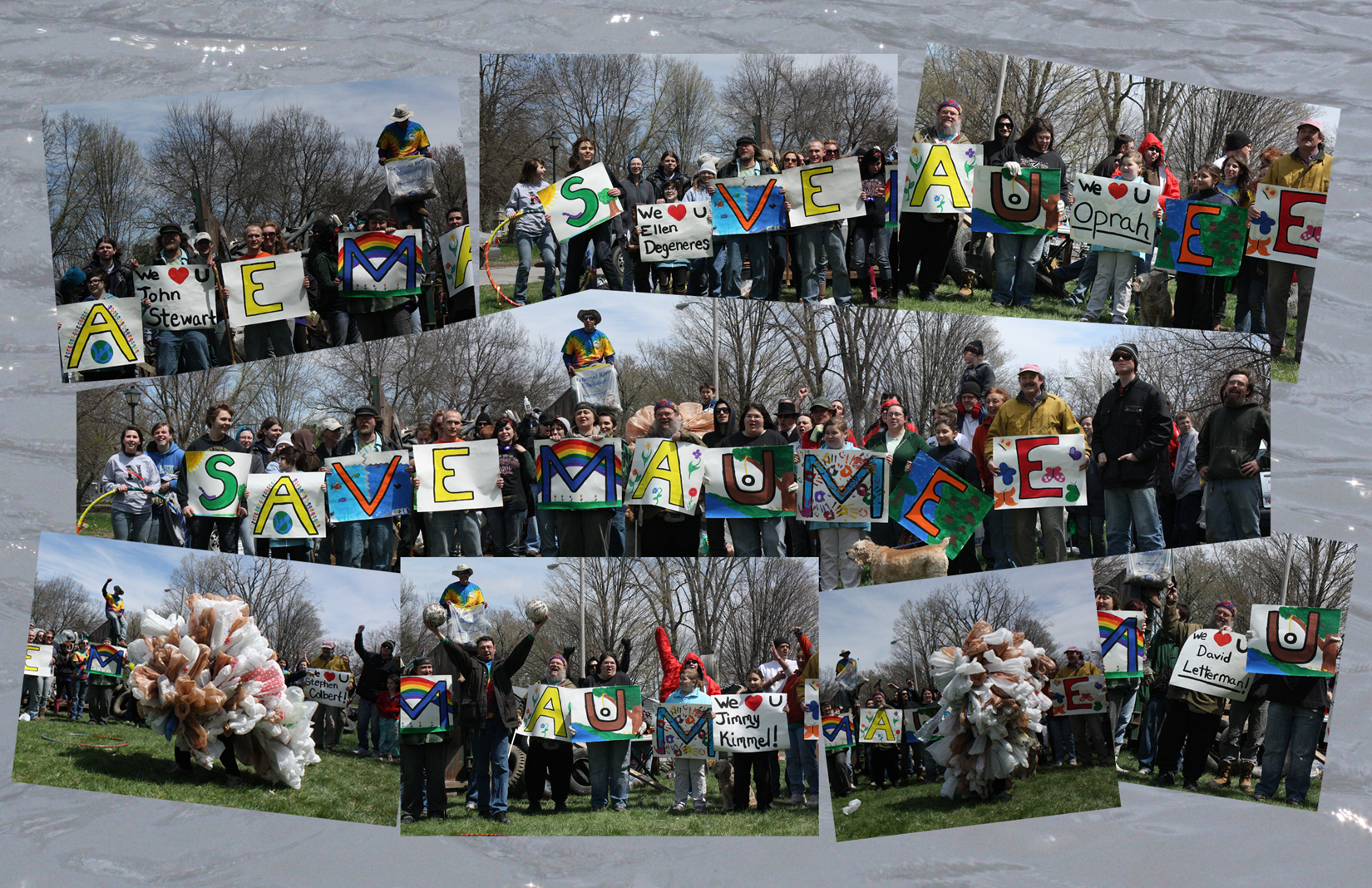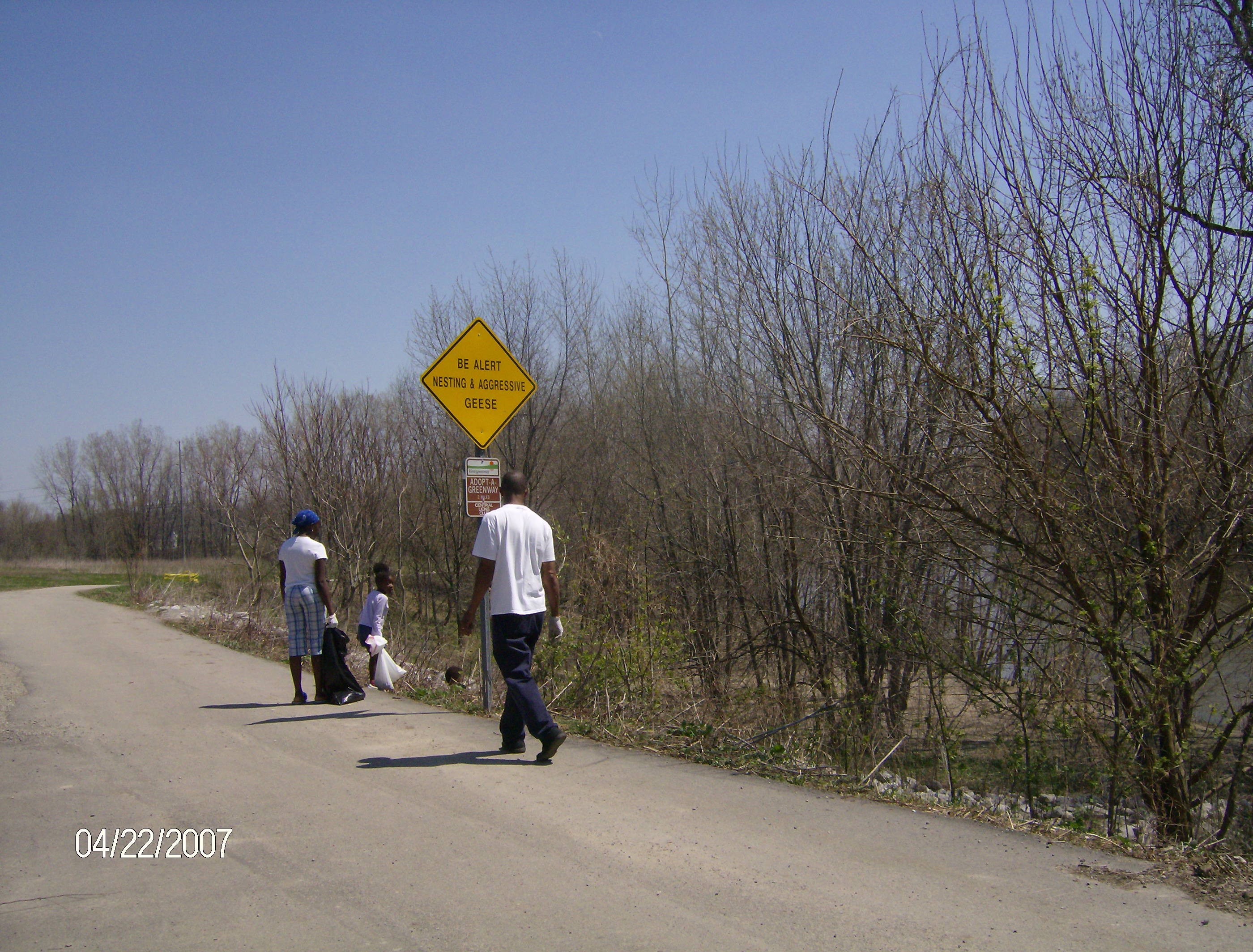Currently, the Upper Maumee drains (the first half of the Maumee that headwaters in downtown Fort Wayne from Combined & Sanitary Sewer Overflows
 Rain and snowmelt discharged from combined stormwater and sewer systems can cause serious pollution in rivers and lakes in urban areas. These sewer systems were designed to capture and treat both domestic wastewater as well as stormwater runoff. But in many places development has increased beyond the capacity of combined sewer systems which causes them to periodically overflow, sending raw sewage into surface water bodies (combined sewer overflows). In areas where stormwater drains were never connected with the sanitary sewer system, raw sewage overflows can result from substantial amounts of water leaking into old pipes, pipe blockages, pipe breaks, power failures or insufficient capacity in the system. Such overflows are called sanitary sewer overflows.
Rain and snowmelt discharged from combined stormwater and sewer systems can cause serious pollution in rivers and lakes in urban areas. These sewer systems were designed to capture and treat both domestic wastewater as well as stormwater runoff. But in many places development has increased beyond the capacity of combined sewer systems which causes them to periodically overflow, sending raw sewage into surface water bodies (combined sewer overflows). In areas where stormwater drains were never connected with the sanitary sewer system, raw sewage overflows can result from substantial amounts of water leaking into old pipes, pipe blockages, pipe breaks, power failures or insufficient capacity in the system. Such overflows are called sanitary sewer overflows.
Combined sewer overflows (CSOs) and sanitary sewer overflows (SSOs) are leading causes of water quality impairment across the country. The EPA states that only 32 percent of communities with CSOs are implementing the minimum controls, despite a January 1997 deadline. Only 19 percent have completed their plans for controlling CSOs, and fewer than 10 percent have finished implementing CSO controls. The EPA estimates that 1,260 billion gallons of raw sewage from CSO discharges flow into our surface waters every year.
The overflows carry pollutants, including soil and grease, chemicals, nutrients, heavy metals, bacteria, viruses and oxygen-consuming substances. Some discharges into the system are illicit and may include used motor oil, antifreeze, pesticides, herbicides and fertilizers. Throughout the country, necessary (but costly) structural improvements and better management practices are being required by the EPA to eliminate the overflows.
In Fort Wayne we have 42 discharge points that discharge on average 71 times per year. The EPA allows 4 per year. The “Long Term Control Plan” is Fort Wayne’s 17 year plan to reduce the sewage into local streams. You can find it here!
Using the Clean Water Act
NPDES point source permits
NPDES permits are required for combined sewer systems and sanitary sewer systems that experience overflows. These permits usually lay out compliance schedules for reducing raw sewage discharge. Find out what your state is doing about combined sewer systems and leaking sanitary sewer systems that experience overflows. Ask questions about monitoring and compliance. Citizen monitoring can identify problems and direct agency attention. Stormwater NPDES requirements to improve management of stormwater volumes can contribute to the CSO/SSO solution.
Water quality standards
Identify the existing and designated uses downstream of combined sewer overflows and sanitary sewer overflows. Which uses are the most sensitive to pollution from the overflows? To protect those uses, identify water quality criteria for bacteria, heavy metals, petroleum byproducts (PAHs), pesticides, fertilizer, bioaccumulative toxic pollutants, sediment (total suspended solids), habitat, stream flow and biology. Evaluate whether the criteria are stringent enough to protect existing and designated uses.
303(d) impaired waters list
Do the waters downstream of combined sewer overflows or sanitary sewer overflows in your watershed support uses and meet water quality criteria? If not, or if they are threatened by CSOs or SSOs, make sure they are on the 303(d) list for the appropriate pollutants, problems and threats.
Total Maximum Daily Loads
Is there a TMDL scheduled or in progress in your watershed? Are CSOs and SSOs included as sources of the impairments? Have changes to the permits, compliance schedules and proposed construction been included in the TMDL implementation plan? If not, encourage your agency to include them.
Section 319 nonpoint source control
This section of the Clean Water Act authorizes money to the states for projects that address nonpoint source pollution. In recent years, 319 money has been available to some municipalities to develop their stormwater program. Ask your state water quality agency about how to apply for a 319 grant to reduce stormwater problems in your watershed, especially those that contribute to CSOs or SSOs.
Using other laws
Safe Drinking Water Act
Is the surface water or groundwater downstream of CSOs or SSOs used or designated for drinking? If so, it is likely that drinking water concerns will provide leverage to ensure CSOs and SSOs are addressed expeditiously. Identify the risks and talk to the agency in charge of developing the Source Water Assessment for your watershed. Be sure that the CSO and SSO risks to drinking water sources are included in the assessment and considered by your drinking water provider.
Endangered Species Act
Are there threatened or endangered species in your watershed? If so, you have another tool to pressure for the elimination of CSOs and SSOs. The Endangered Species Act prohibits any activity that would result in harmful impacts to the species or its habitat.
website and previous information found here: http://www.rivernetwork.org/rn/combined-and-sanitary-sewer-overflows










